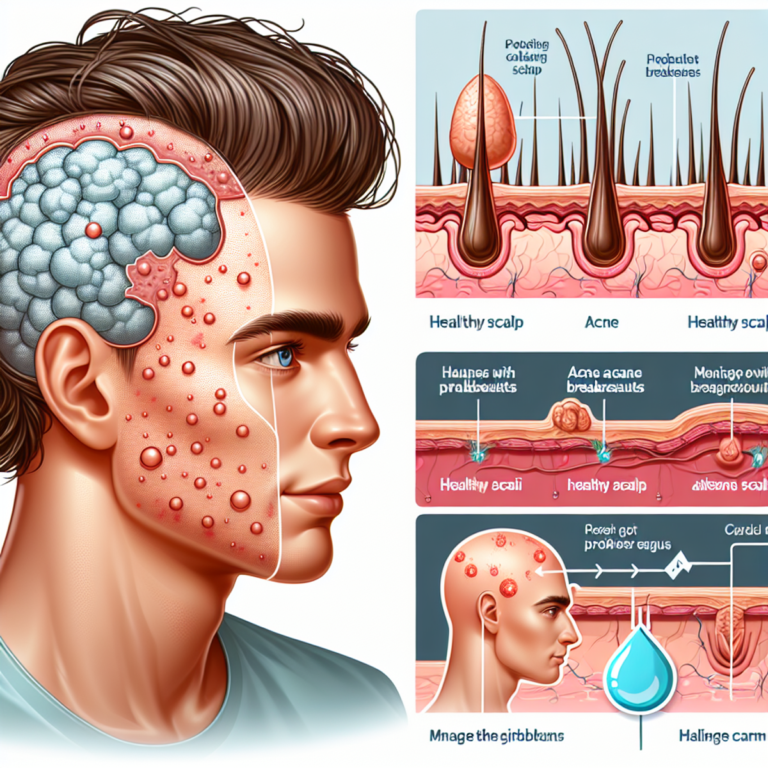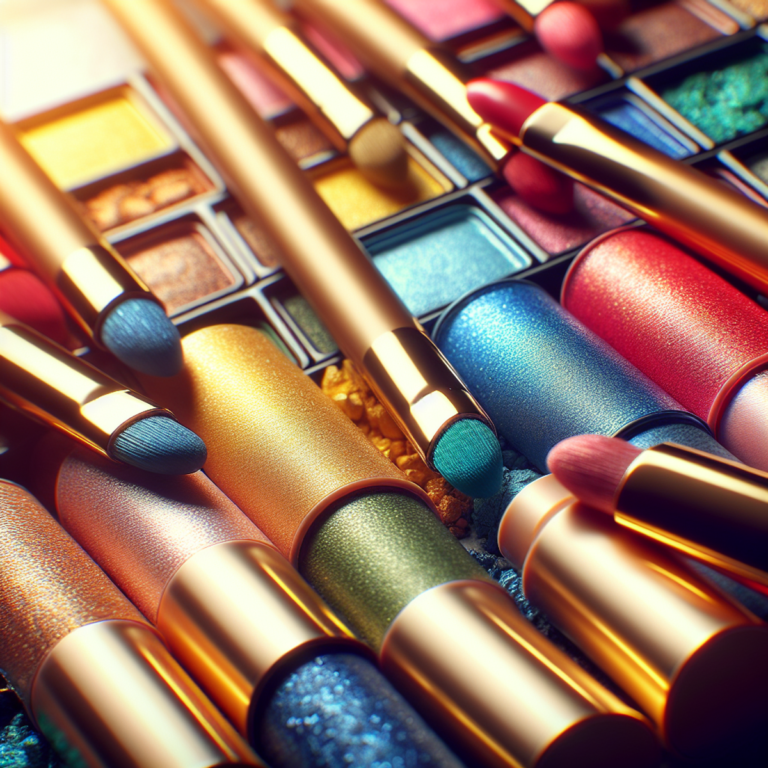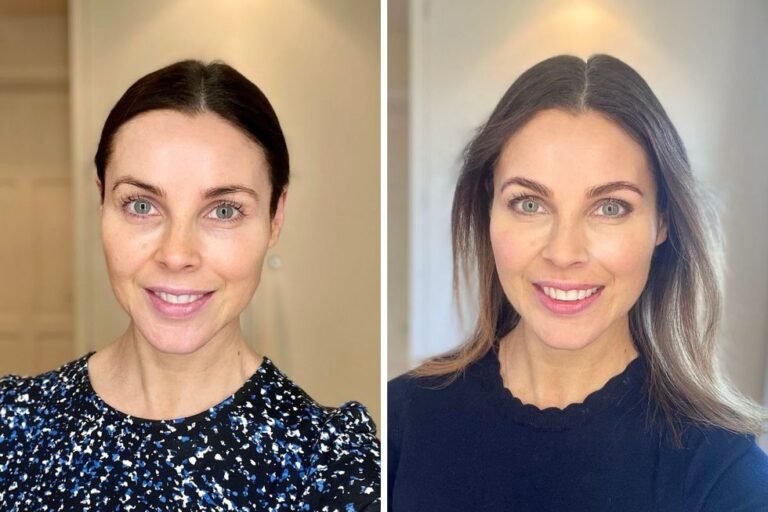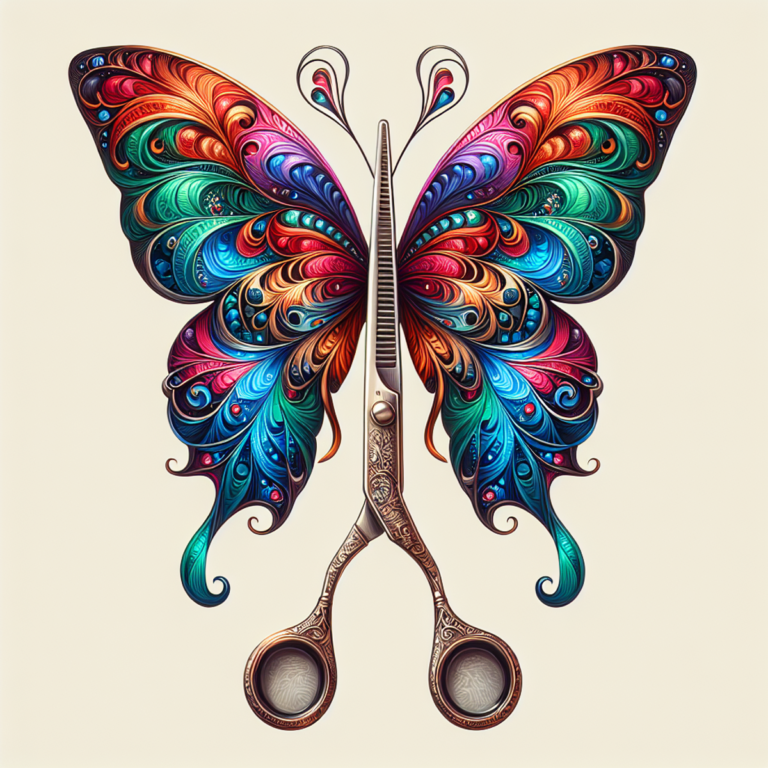How to Get Rid of Ingrown Hairs on Your Scalp, According to Dermatologists

Introduction
Ingrown hairs on the scalp can be frustrating and uncomfortable for many people. Instead of growing out of the skin, these hairs grow back into it, causing irritation, itchiness, and sometimes even red, raised bumps. Dealing with ingrown hairs can affect both the health and appearance of the scalp.
To effectively deal with and prevent ingrown hairs on the scalp, it’s important to consult with dermatologists. They have the knowledge and expertise to offer customized advice on how to treat existing ingrown hairs and prevent future ones. By talking to dermatologists, you can learn about personalized scalp care routines and appropriate hair removal methods based on your specific scalp type and hair characteristics.
Understanding Ingrown Hairs on the Scalp
Dealing with ingrown hairs on your scalp can be frustrating and uncomfortable. It can cause irritation, pain, and even lead to infections if not properly managed. But don’t worry, we’re here to help! In this article, we’ll break down everything you need to know about ingrown hairs on the scalp, including their causes and how to prevent them effectively.
What Are Ingrown Hairs?
Ingrown hairs happen when a hair strand curls back or grows sideways into the skin instead of growing out from it as it should. On the scalp, this can result in the formation of small bumps or pustules that are often painful to touch and may itch or feel tender.
Why Do Ingrown Hairs Happen on the Scalp?
The main reason why ingrown hairs occur on the scalp is due to improper hair removal methods. When you cut or shave your hair, it tends to have a sharper edge as it starts growing back. This makes it easier for the hair to penetrate the skin instead of growing straight out, leading to ingrown hairs.
Another factor that contributes to ingrown hairs on the scalp is the buildup of dead skin cells. When these dead skin cells accumulate on your scalp, they can block the hair follicles, trapping the growing hair beneath the surface and causing it to become ingrown.
How Hair Type Affects Ingrown Hairs
It’s essential to note that hair type plays a significant role in determining who is more susceptible to getting ingrown hairs on their scalp. People with curly or coarse hair are at higher risk because of the natural curling pattern of their hair strands. This means that individuals with tightly coiled or kinky hair textures may experience ingrown hairs more frequently compared to those with straighter hair types.
Prevention Is Key
Now that you understand how ingrown hairs happen and what factors contribute to their development, it’s time to talk about prevention. Here are some practical tips you can follow to minimize the occurrence of ingrown hairs on your scalp:
- Use proper hair removal techniques: Opt for methods like gentle exfoliation or using an electric trimmer instead of shaving too closely or aggressively.
- Moisturize your scalp: Keeping your scalp hydrated can help soften the skin and prevent the buildup of dead cells.
- Avoid tight hairstyles: Styles that pull on the hair tightly, such as braids or ponytails, can increase the chances of hairs becoming ingrown.
- Be gentle when grooming: Whether you’re brushing, combing, or styling your hair, remember to handle it with care to avoid any unnecessary tension or damage.
By incorporating these preventive measures into your hair care routine and being mindful of how you remove and style your hair, you can significantly reduce the likelihood of dealing with pesky ingrown hairs on your scalp.
Recognizing and Diagnosing Ingrown Hairs on the Scalp
Ingrown hairs on the scalp can often be mistaken for other scalp issues, particularly pimples. It’s important to recognize the characteristics that distinguish ingrown hairs from other conditions to ensure proper diagnosis and treatment. Here are some key points to help you identify and diagnose ingrown hairs on the scalp:
- Resemblance to pimples: Ingrown hairs on the scalp can bear a striking resemblance to pimples. They often appear as small, red raised bumps on the skin. These bumps may have a white dot at the center, indicating the presence of pus. It’s important not to confuse these bumps with acne or other skin conditions.
- Red raised bumps: One of the primary signs of ingrown hairs on the scalp is the presence of red raised bumps. These bumps can be tender or itchy and may cause discomfort. They usually occur in areas where hair has been recently shaved, plucked, or waxed.
- Accumulation of dead skin cells: Dead skin cell accumulation plays a significant role in causing or exacerbating ingrown hairs on the scalp. When dead skin cells clog the hair follicle opening, it can lead to hair growing sideways or curling back into the skin instead of growing out naturally. This results in inflammation and the formation of ingrown hairs.
To properly diagnose ingrown hairs on your scalp, it’s essential to consider these distinguishing factors. If you notice red raised bumps resembling pimples in areas where hair removal has recently occurred, there is a high possibility that they are ingrown hairs. However, it’s always best to consult with a dermatologist for an accurate diagnosis and appropriate treatment.
Additionally, DIY treatments for common beard problems can also be applied to scalp hair care to prevent or manage ingrown hairs. By understanding these characteristics and implementing proper care routines, you can differentiate ingrown hairs from other scalp conditions and take appropriate action.
Preventing Ingrown Hairs on the Scalp
To maintain a healthy scalp and minimize the risk of ingrown hairs, it’s essential to adopt a comprehensive approach to scalp care. By implementing effective skin care practices and following proper shaving guidelines, you can significantly reduce the occurrence of ingrown hairs on your scalp. Additionally, exploring alternative hair removal methods may offer advantages in preventing ingrown hairs.
Here are some tips to help you prevent ingrown hairs on the scalp:
- Pre-Shave Skin Preparation: Before shaving your scalp, it’s important to prepare your skin properly. Start by rinsing your scalp with warm water for a few minutes to soften the hair follicles and open up the pores. This will make it easier for the razor to glide smoothly over the skin and reduce the chances of ingrown hairs.
- Use Moisturizing Shaving Cream or Gel: Apply a thick layer of moisturizing shaving cream or gel to your scalp before shaving. These products provide lubrication and protection, allowing the razor to glide easily while minimizing irritation and friction. Look for products specifically designed for sensitive skin to further reduce the risk of ingrown hairs.
- Proper Shaving Technique: When shaving your scalp, it’s crucial to follow the right technique. Shave in the direction of hair growth to prevent cutting the hair too short or causing irritation that can lead to ingrown hairs. Use light pressure and short strokes, rinsing the blade frequently to ensure a clean shave.
- Regularly Change Blades: Dull blades can cause tugging and pulling on the hair, increasing the likelihood of ingrown hairs. Replace your razor blades regularly, ideally after every 5-7 shaves or as soon as you feel any resistance while shaving.
- Explore Alternative Hair Removal Methods: If you’re prone to ingrown hairs on your scalp, consider exploring alternative hair removal methods that may be more suitable for you. Laser hair removal is a popular option as it offers long-term results and can permanently reduce hair growth, minimizing the risk of ingrown hairs. However, it’s essential to consult with a dermatologist or hair removal specialist to determine if this method is suitable for your scalp.
Remember, preventing ingrown hairs on the scalp requires consistent effort and attention to detail. By incorporating these practices into your routine, you can significantly reduce the occurrence of ingrown hairs and maintain a healthy scalp.
Treating Ingrown Hairs on the Scalp
When it comes to treating ingrown hairs on the scalp, it’s important to approach the issue with caution and seek professional guidance if needed. While mild cases of ingrown hairs can often be managed at home, severe or recurrent cases may require the expertise of a dermatologist. Here are some key points to consider:
- Potential risks of improper at-home removal: It’s crucial to avoid the temptation of picking or squeezing ingrown hairs on the scalp. This can lead to further irritation, infection, and scarring. Instead, opt for safer and more effective treatment methods.
- Safe and effective remedies for mild cases: Mild ingrown hairs on the scalp can often be treated with simple remedies such as warm compresses and gentle exfoliation using a soft-bristled brush or a scalp-specific scrub. These methods help in removing dead skin cells and promoting hair growth.
- The role of chemical exfoliants: Chemical exfoliants, such as alpha-hydroxy acids (AHAs) or beta-hydroxy acids (BHAs), can be beneficial in promoting the release of trapped hairs on the scalp. However, it’s important to use these products with caution and follow the instructions provided, as overuse or misuse can lead to skin irritation.
- Seeking professional guidance: If you’re dealing with severe or recurrent ingrown hairs on your scalp, it’s best to consult a dermatologist for appropriate treatment options. They can provide personalized advice based on your specific condition and recommend treatments like preventing ingrown hair that are suitable for your scalp.
Remember, the key to successfully treating ingrown hairs on the scalp is to be patient and consistent with your chosen treatment method. It may take some time for the hair to release itself naturally, so avoid the urge to forcefully remove it. If you’re unsure about the best course of action or if your condition worsens, don’t hesitate to seek professional advice.
Recommended Products for Ingrown Hair Prevention and Treatment
When it comes to preventing and managing ingrown hairs on the scalp, using the right products can make a significant difference. Here are some specific types of products that can aid in both prevention and treatment:
- Moisturizing Shaving Creams/Gels: One of the key steps to maintaining scalp health and reducing irritation is using moisturizing shaving creams or gels. These products create a protective barrier between the razor and your skin, allowing for a smoother shave while minimizing the risk of ingrown hairs. Look for formulas that contain hydrating ingredients like aloe vera or shea butter.
- Soothing Serums: Nourishing the scalp and calming any inflammation that may contribute to ingrown hairs is crucial. Soothing serums can provide relief by moisturizing the skin and reducing redness or irritation. Ingredients like chamomile extract or tea tree oil have anti-inflammatory properties that can help soothe the scalp.
- Exfoliating Scrubs: Dead skin cell accumulation on the scalp can lead to follicle blockage, which increases the likelihood of ingrown hairs. Exfoliating scrubs can effectively remove these dead skin cells, unclog the hair follicles, and prevent ingrown hairs from forming. Look for scrubs with gentle exfoliants like sugar or jojoba beads, as harsh scrubbing can irritate the scalp.
- Ingrown Hair Pads/Serums: Targeted ingrown hair pads or serums specifically designed for treating this issue on the scalp can be highly effective. These products often contain ingredients like glycolic acid or salicylic acid, which help exfoliate the skin and promote the release of trapped hairs. However, it’s important to follow the instructions carefully and avoid overuse, as excessive exfoliation can lead to further irritation.
Remember, everyone’s skin is unique, so it may take some trial and error to find the right products that work best for you. It’s also essential to consult with a dermatologist or skincare professional for personalized recommendations based on your specific needs and skin type.
By incorporating these recommended products into your scalp care routine, you can help prevent and manage ingrown hairs effectively. However, it’s important to note that these products are meant to complement proper shaving techniques and overall scalp care practices. For severe or recurrent ingrown hairs, it is always advisable to seek professional guidance from a dermatologist who can provide appropriate treatment options.
Lifestyle Adjustments for a Healthy Scalp and Hair Growth
Maintaining a healthy scalp is essential for preventing and managing ingrown hairs. Along with using the right products, incorporating certain lifestyle adjustments can greatly contribute to scalp health and promote healthy hair growth. Here are some key factors to consider:
1. Nutrition
A balanced diet plays a crucial role in maintaining optimal scalp condition and reducing the likelihood of ingrown hairs. Including the following nutrients in your diet can support scalp health:
- Omega-3 fatty acids: Found in fatty fish like salmon, mackerel, and sardines, as well as flaxseeds and walnuts, omega-3 fatty acids have anti-inflammatory properties that can help reduce scalp inflammation and promote healthy hair growth.
- Vitamin E: Foods rich in vitamin E, such as almonds, spinach, sunflower seeds, and avocados, provide antioxidants that protect the scalp from oxidative stress and maintain its overall health.
- Biotin: Also known as vitamin B7, biotin supports hair health by promoting keratin production. Include foods like eggs, nuts, whole grains, and leafy greens in your diet to ensure an adequate intake of biotin.
2. Stress Management
Stress can have a significant impact on both systemic and scalp health. High stress levels may disrupt the natural hair growth cycle and increase the risk of developing ingrown hairs. Implementing stress management techniques can help maintain a healthy scalp:
- Exercise: Engaging in regular physical activity not only reduces stress but also improves blood circulation to the scalp, delivering essential nutrients to hair follicles.
- Meditation or deep breathing exercises: Taking time to relax and clear your mind can help reduce stress levels. Practice meditation or deep breathing exercises to promote relaxation and minimize the negative effects of stress on your scalp.
- Get enough sleep: Prioritize quality sleep to support overall well-being and reduce stress. Aim for 7-9 hours of uninterrupted sleep each night.
3. Gentle Hair Care Practices
Practicing gentle hair care techniques is crucial for minimizing traction, friction, and damage to the scalp. Here are some tips to promote healthy hair growth and reduce the risk of ingrown hairs:
- Avoid tight hairstyles: Hairstyles that pull on the scalp, such as tight ponytails or braids, can create tension and increase the likelihood of ingrown hairs. Opt for looser styles that allow your scalp to breathe.
- Use a wide-toothed comb or brush: When detangling your hair, use a wide-toothed comb or brush with soft bristles to minimize hair breakage and reduce irritation on the scalp.
- Limit heat styling: Excessive heat from styling tools can dry out the scalp and lead to hair damage. Minimize the use of heat styling tools or use them on low heat settings to protect your scalp.
- Protect your scalp from sun exposure: Just like your skin, your scalp can also be affected by harmful UV rays. Wear a hat or apply a sunscreen specifically designed for the scalp when spending extended periods in the sun.
By adopting these lifestyle adjustments, you can create an environment that promotes a healthy scalp and reduces the occurrence of ingrown hairs. Remember that consistency is key, and combining these practices with appropriate hair care products will yield the best results in maintaining optimal scalp health.
Incorporating Scalp Care into Your Overall Skincare Routine
When it comes to taking care of your scalp, incorporating scalp-friendly ingredients and ensuring sun protection are essential components of your overall skincare routine.
1. Scalp-Friendly Ingredients
Look for products containing scalp-friendly ingredients that can promote a healthy scalp environment. For instance, tea tree oil is known for its antimicrobial properties, which can help combat any potential scalp issues. It’s important to choose products that are formulated specifically for the scalp, as the skin on the scalp may have different needs compared to the skin on other parts of your body.
2. UV Protection for the Scalp
Just like the rest of your skin, your scalp needs protection from the sun’s harmful UV rays. Exposure to UV radiation can lead to scalp damage and increase the risk of skin cancer. Consider using a sunscreen specifically designed for the scalp or wearing protective hats that shield your scalp from direct sunlight. This is particularly important if you have thinning hair or a receding hairline, as these areas are more susceptible to sun exposure.
By incorporating scalp care into your overall skincare routine, you can ensure that your scalp remains healthy and free from issues such as ingrown hairs. Paying attention to the specific needs of your scalp and providing it with the care it deserves will contribute to maintaining optimal scalp health in the long run.
The Link Between Ingrown Hairs on the Scalp and Underlying Skin Conditions
Conditions like folliculitis and keratosis pilaris can contribute to the development of ingrown hairs on the scalp. Understanding how these conditions intersect with ingrown hairs is crucial for effective management and treatment.
Folliculitis
This is a common skin condition characterized by inflamed hair follicles. When the hair follicles on the scalp become inflamed, it can lead to the development of ingrown hairs. Folliculitis can be caused by bacterial or fungal infections, as well as other factors such as friction from tight headwear or aggressive scrubbing during shampooing. It often presents as small red bumps that may be itchy or painful. If you suspect you have folliculitis, especially if it’s severe or recurring, seeking medical treatment from a dermatologist is recommended.
Keratosis Pilaris
Also known as “chicken skin,” keratosis pilaris is a common, harmless skin condition that causes dry, rough patches and tiny bumps, particularly on the upper arms, thighs, cheeks, or buttocks. While it typically affects areas other than the scalp, individuals with keratosis pilaris may experience similar issues on their scalp due to the accumulation of keratin around hair follicles. This can lead to blockages and subsequent ingrown hairs. While keratosis pilaris itself does not necessarily require medical treatment, managing its symptoms through gentle exfoliation and moisturization can help reduce the likelihood of ingrown hairs developing.
Understanding the relationship between these underlying skin conditions and ingrown hairs on the scalp is essential for effective prevention and treatment strategies. It’s important to seek medical advice if these conditions are suspected to be contributing to the development of ingrown hairs.
Final Thoughts
It’s important to prioritize scalp health as part of your overall well-being. By taking proactive steps to prevent ingrown hairs using the strategies and products mentioned in this article, you can keep your scalp healthy.
Remember, it’s always helpful to consult with a dermatologist for personalized recommendations on dealing with ingrown hairs on the scalp. They can offer specialized solutions based on your individual needs.
Take good care of your scalp and seek professional advice when needed to maintain optimal scalp health and avoid the discomfort caused by ingrown hairs.










